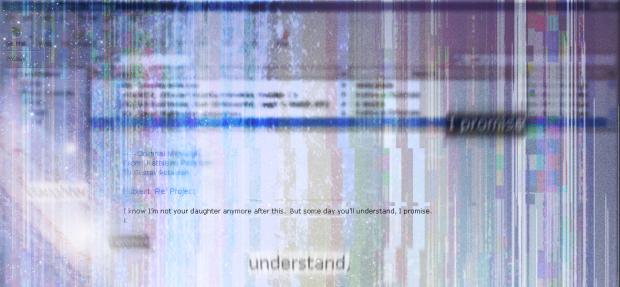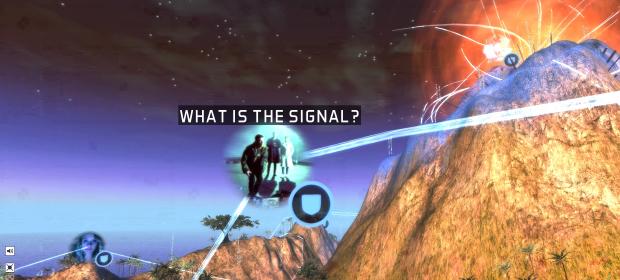Cloud Chamber is an intriguing upcoming MMO from Investigate North. The game itself is an attempt to blend modern styled social connections with a big mystery, asking players to actively discuss and compare thoughts about all manner of materials, such as found footage style vignettes and photographs, which you find within the digital database that is Cloud Chamber.
I recently had a chance to have a long and insightful discussion with Cloud Chamber’s Director, Christian Fonnesbech, and discovered that, well, he’s a chap that likes to talk. A lot, which is always great. So without further ado, here’s the first of many parts of this interview, with this first section focusing on the origins of Cloud Chamber’s creation, the focus of the idea, and the spark that defines how the game works.
 Firstly, Christian, congratulations on Cloud Chamber. How long has it been since you started the project?
Firstly, Christian, congratulations on Cloud Chamber. How long has it been since you started the project?
I’ve actually been working on Cloud Chamber for the last four years. It’s actually been wonderful to spend four years on one project, because there were ten years before then that I did 35 projects. So for once to just be able to go all the way on one thing and keep going until it feels right it’s just fantastic.
Not a lot of people get that liberty…
Exactly, and I’ve never had that privilege before. I started doing game development in 2001. I was in love with this idea of new kinds of stories but there was no business model and I wasn’t part of the gaming world, so I just started doing internet stories. I mean, they were games with stories – we were just trying out different formats – and the only way we could get them made was to sell them as advertising or e-learning or stuff like that.
That would be shortly after The Blair Witch Project, when viral internet story things were taking off?
We were inspired by the Blair Witch Project. I’ve done three sort of ARG things that rolled out week by week, but from the start with Cloud Chamber we tried to contain it all in one place. We didn’t like the idea of people having to skip between websites and puzzles gates and all that, it just didn’t work for me.
Puzzle Gates?
Yeah, where you can’t progress [in a game] until you work something out it just seemed, y’know, we wanted to tell a story that involved you emotionally, and putting a puzzle between you and the story is not emotionally involving. The thing that happens with a lot of video games is that story and the game split up – they’re two different things – so really the puzzle is in the way of the story, and the story is in the way of the gameplay and you’re just skipping between the two. Here, we’re really trying to turn the story into the game. The story is the game.
Figuring out what the story is, is the game. It’s a puzzle in itself.

But surely you need interaction, otherwise it’s just a story?
I actually think that the key is multiplayer. I actually think that, based on what we’re experiencing now, that the problem is single player. If you’re only one person in the story then you have to have a gameplay mechanism between you and the story because what else are you going to do? In traditional media you’re watching a book or reading a film, there has to be something more for it to be a game and if you’re doing that in single player then you have to shoot something, or you have to jump over something, or you have to find the bucket and then find the water and then put the water in the bucket, place it on the plate and the door opens, y’know? And then you get the next bit of story.
But if you’re in multiplayer, and you’re in discussion, then suddenly it becomes possible to have figuring out the story be the gameplay, with nothing between you and that, and – I’m rationalising after the fact, but – that’s really what we stumbled upon. That’s the gameplay in Cloud Chamber.
 When did you first stumble upon this concept?
When did you first stumble upon this concept?
We first stumbled onto it in 2007 when we did a project called The Galatea Mystery. What was happening was that in real life here in Denmark they’d taken a warship, the government had financed turning a warship into a research vessel, and it was sailing around the world for a year and they put a bunch of scientists on board. The whole idea was to get young people interested in science so it was on TV and in newspapers and so on.
We pointed out that you’re only going to be talking to the people that are already interested in science, so we said ‘how about we make an online thriller, and pretend there’s a madman on board and he’s going to blow up the world’. So we basically built a community around a guy who was monitoring this community, and we pretended that he was on this ship. So for eight months [we had] kids coming in and chatting with this guy who was alone on this ship because everybody else hated him – they thought he was the weirdo, they thought he was the guy doing strange stuff down in the hull – so his only connection with the real world was through these kids he was chatting with online, everybody else hated him, and there was a madman on board.
So it’s a different construction [to Cloud Chamber] because the dramatic events were rolling out day by day, week by week, month by month, and the biggest design challenge we had with Cloud Chamber was to take time out of the equation simply because we didn’t want to feel like, ‘we spend years making these things, they appeared and then they disappeared!’ That’s just completely unsatisfying. So how can we create something so that it’s all there from the start but you have to explore it yourself, and that’s where we came up with the idea of basically stealing the map from World of Warcraft.
That’s all it is, basically, except you’re not just exploring a world, you’re exploring a story. And how can we do that? Well that’s where the database comes in. This was actually when Julian Assange was going, y’know, nuclear all over the world. So this idea that you have this wiki leaks sort of thing that you go in and explore in a 3D way, a World of Warcraft-y way, that became the Crowdscape. It’s a database that has a visual landscape, and that came out of all those things; the design requirement that it had to be permanent, and this wanting to give people something to explore when time was taken out of it.
The next part of God is a Geek’s interview with Cloud Chamber Director Christian Fonnesbech will focus on Christian’s inspirations, some big numbers, and God.






